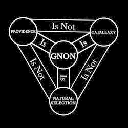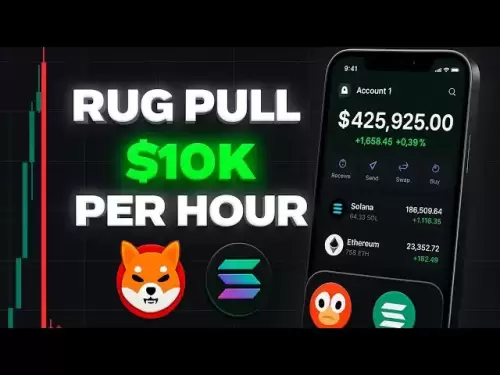-
 Bitcoin
Bitcoin $117700
-0.03% -
 Ethereum
Ethereum $3805
0.49% -
 XRP
XRP $3.098
-1.00% -
 Tether USDt
Tether USDt $1.000
0.03% -
 BNB
BNB $792.8
-1.72% -
 Solana
Solana $177.9
-1.95% -
 USDC
USDC $1.000
0.02% -
 Dogecoin
Dogecoin $0.2202
-1.55% -
 TRON
TRON $0.3278
-2.92% -
 Cardano
Cardano $0.7641
-2.43% -
 Hyperliquid
Hyperliquid $42.21
-2.68% -
 Sui
Sui $3.758
-1.58% -
 Stellar
Stellar $0.4080
-3.21% -
 Chainlink
Chainlink $17.75
-0.33% -
 Bitcoin Cash
Bitcoin Cash $591.8
4.96% -
 Hedera
Hedera $0.2561
-3.09% -
 Avalanche
Avalanche $23.34
-4.24% -
 Litecoin
Litecoin $110.7
1.96% -
 UNUS SED LEO
UNUS SED LEO $8.956
-0.01% -
 Toncoin
Toncoin $3.410
0.79% -
 Ethena USDe
Ethena USDe $1.001
0.03% -
 Shiba Inu
Shiba Inu $0.00001288
-1.82% -
 Uniswap
Uniswap $10.07
-2.06% -
 Polkadot
Polkadot $3.807
-2.27% -
 Monero
Monero $308.2
-2.15% -
 Dai
Dai $1.000
0.03% -
 Bitget Token
Bitget Token $4.521
-0.30% -
 Pepe
Pepe $0.00001134
-1.52% -
 Cronos
Cronos $0.1457
0.65% -
 Aave
Aave $274.9
-2.47%
What is a cross-chain bridge of blockchain? How to ensure asset security?
Cross-chain bridges enable asset and data transfer between blockchains, enhancing interoperability and liquidity in DeFi ecosystems while ensuring security through multi-signature wallets and audits.
Apr 27, 2025 at 03:22 pm
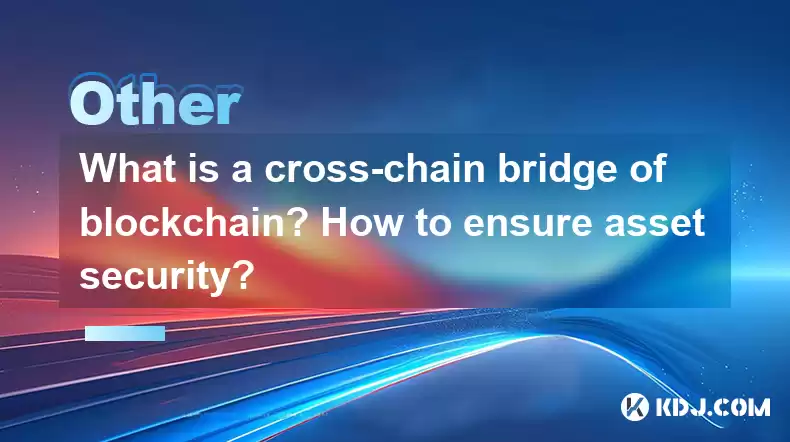
A cross-chain bridge in the realm of blockchain technology serves as a crucial infrastructure that enables the transfer of assets and data between different blockchain networks. This functionality is essential for enhancing the interoperability and liquidity across various decentralized ecosystems. A cross-chain bridge acts as a conduit, allowing users to move their cryptocurrencies, tokens, or other digital assets from one blockchain to another seamlessly. This article will delve into the mechanics of cross-chain bridges, their importance, and the measures taken to ensure asset security during these transactions.
What is a Cross-Chain Bridge?
A cross-chain bridge is a protocol or a set of smart contracts that facilitate the transfer of assets between different blockchains. These bridges are vital for the decentralized finance (DeFi) ecosystem, as they allow users to leverage the unique features and strengths of multiple blockchains. For instance, a user might want to transfer assets from Ethereum to Binance Smart Chain to take advantage of lower transaction fees or faster transaction times.
Cross-chain bridges work by locking the assets on the source blockchain and minting equivalent assets on the target blockchain. Once the user decides to move the assets back, the process is reversed: the assets on the target blockchain are burned, and the locked assets on the source blockchain are released. This mechanism ensures that the total supply of the asset remains constant across the networks.
Types of Cross-Chain Bridges
There are several types of cross-chain bridges, each with its own method of operation and security model. The most common types include:
Locked and Mint Bridges: These bridges lock the assets on the source chain and mint new tokens on the target chain. The minted tokens are backed 1:1 by the locked assets, ensuring that the value remains consistent across both chains.
Burn and Mint Bridges: In this model, the assets on the source chain are burned, and an equivalent amount of new tokens is minted on the target chain. When the user wants to move the assets back, the tokens on the target chain are burned, and new tokens are minted on the source chain.
Wrapped Tokens: These are tokens that represent another asset on a different blockchain. For example, Wrapped Bitcoin (WBTC) is a token on the Ethereum blockchain that represents Bitcoin. The process involves locking Bitcoin on the Bitcoin blockchain and minting WBTC on Ethereum.
Ensuring Asset Security in Cross-Chain Bridges
Ensuring the security of assets during cross-chain transfers is paramount. Several mechanisms are employed to safeguard assets and maintain the integrity of the transactions. These include:
Multi-Signature Wallets: Many cross-chain bridges use multi-signature wallets to manage the locking and unlocking of assets. A multi-signature wallet requires multiple signatures (or approvals) before any transaction can be executed, adding an extra layer of security.
Decentralized Governance: Some bridges operate under decentralized governance models, where decisions regarding the bridge's operation and security are made collectively by a community of stakeholders. This approach helps to prevent centralized points of failure and enhances the overall security of the system.
Regular Audits and Security Checks: To ensure the ongoing security of the bridge, regular audits and security checks are conducted. These audits are often performed by third-party security firms that specialize in blockchain technology, ensuring that any vulnerabilities are identified and addressed promptly.
Insurance Funds: Some cross-chain bridges have insurance funds in place to cover potential losses due to hacks or exploits. These funds are often funded by a portion of the transaction fees and provide an additional layer of protection for users.
How to Use a Cross-Chain Bridge
Using a cross-chain bridge involves several steps, and the exact process can vary depending on the specific bridge and the blockchains involved. Here is a general guide on how to use a cross-chain bridge:
Select a Cross-Chain Bridge: Choose a reputable cross-chain bridge that supports the blockchains you want to transfer assets between. Research the bridge's security measures, fees, and user reviews to ensure it meets your needs.
Connect Your Wallet: Navigate to the bridge's website or application and connect your cryptocurrency wallet. Ensure that your wallet supports the blockchains you intend to use.
Initiate the Transfer: Specify the amount of assets you want to transfer and the destination blockchain. Follow the on-screen instructions to initiate the transfer. This typically involves confirming the transaction on your wallet.
Wait for Confirmation: After initiating the transfer, you will need to wait for the transaction to be confirmed on both the source and target blockchains. This process can take anywhere from a few minutes to several hours, depending on the blockchains involved.
Verify the Transfer: Once the transfer is complete, verify that the assets have been successfully transferred to the target blockchain. You can do this by checking your wallet balance on the target blockchain.
Common Challenges and Solutions
Despite their benefits, cross-chain bridges face several challenges, including security risks, scalability issues, and user experience complexities. Here are some common challenges and their solutions:
Security Risks: As mentioned earlier, cross-chain bridges are susceptible to hacks and exploits. To mitigate these risks, bridges employ robust security measures such as multi-signature wallets, decentralized governance, and regular audits.
Scalability Issues: High transaction volumes can lead to congestion and delays on cross-chain bridges. To address this, some bridges implement layer-2 scaling solutions or optimize their smart contract designs to handle higher throughput.
User Experience: The process of using a cross-chain bridge can be complex for new users. To improve the user experience, bridges often provide detailed guides, user-friendly interfaces, and customer support to assist users throughout the transfer process.
Frequently Asked Questions
Q: Can cross-chain bridges be used for any type of asset?
A: While cross-chain bridges are primarily used for transferring cryptocurrencies and tokens, some bridges also support the transfer of other types of digital assets, such as non-fungible tokens (NFTs). However, the specific types of assets supported can vary depending on the bridge and the blockchains involved.
Q: Are there any fees associated with using a cross-chain bridge?
A: Yes, most cross-chain bridges charge fees for their services. These fees can include transaction fees on both the source and target blockchains, as well as a fee for using the bridge itself. The exact fee structure can vary depending on the bridge and the specific transfer being made.
Q: How long does it take to complete a cross-chain transfer?
A: The duration of a cross-chain transfer can vary depending on several factors, including the blockchains involved, the current network congestion, and the specific bridge being used. In general, transfers can take anywhere from a few minutes to several hours.
Q: Can I use a cross-chain bridge to transfer assets between any two blockchains?
A: Not all cross-chain bridges support transfers between any two blockchains. The specific blockchains supported by a bridge can vary, so it's important to check the bridge's documentation to ensure it supports the blockchains you want to use.
Disclaimer:info@kdj.com
The information provided is not trading advice. kdj.com does not assume any responsibility for any investments made based on the information provided in this article. Cryptocurrencies are highly volatile and it is highly recommended that you invest with caution after thorough research!
If you believe that the content used on this website infringes your copyright, please contact us immediately (info@kdj.com) and we will delete it promptly.
- Bitcoin, Penguins, and Meme Coins: A Wild Ride in Crypto Town
- 2025-07-31 16:30:14
- Whale Movement and Altcoins: Buying Pressure Heats Up!
- 2025-07-31 16:30:14
- XRP, AI, and Price Projections: Decoding the Crypto Future
- 2025-07-31 15:10:13
- XRP Investment: Expert Opinions and the Potential for Explosive Growth
- 2025-07-31 15:15:12
- XRP Price: Whale Buys and Token Scoops—What's Next?
- 2025-07-31 15:30:12
- Imagen Network, RLUSD Payments, and Decentralized Applications: A New Era of Web3?
- 2025-07-31 14:30:12
Related knowledge
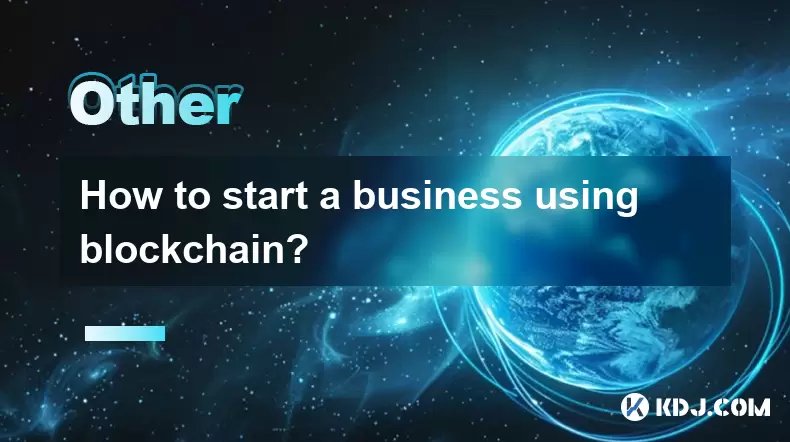
How to start a business using blockchain?
Jul 28,2025 at 12:36am
Understanding the Basics of Blockchain TechnologyBefore diving into the process of starting a business using blockchain, it's crucial to understand wh...
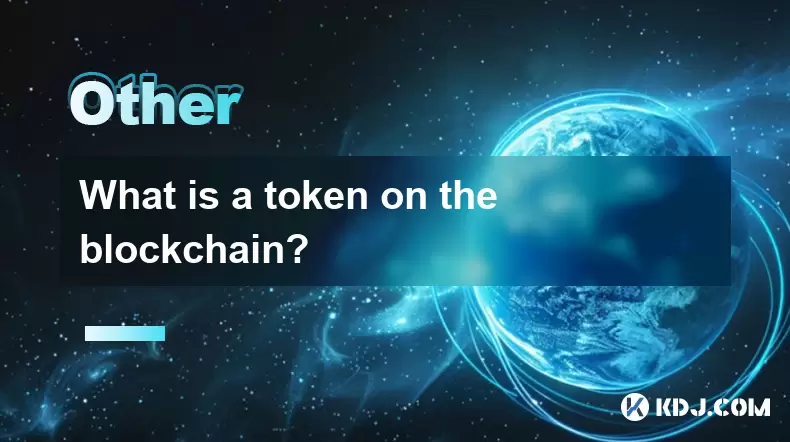
What is a token on the blockchain?
Jul 21,2025 at 07:00am
Understanding the Concept of a TokenIn the realm of blockchain technology, a token is a digital representation of an asset or utility that exists on a...
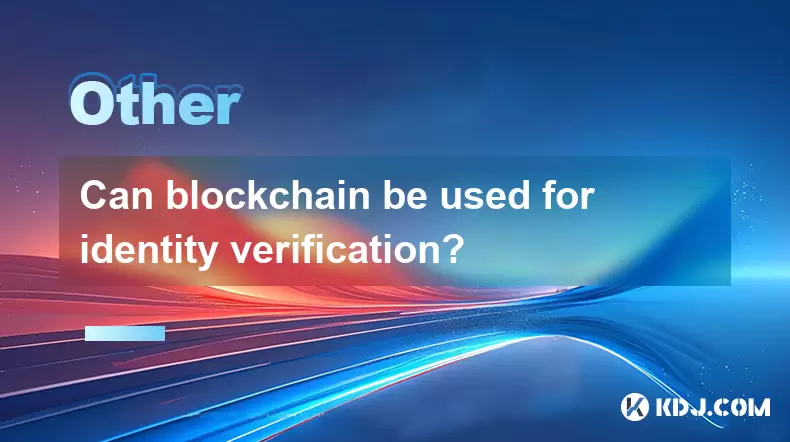
Can blockchain be used for identity verification?
Jul 18,2025 at 02:14pm
Understanding Identity Verification in the Digital AgeIn the modern digital landscape, identity verification has become a critical component for ensur...
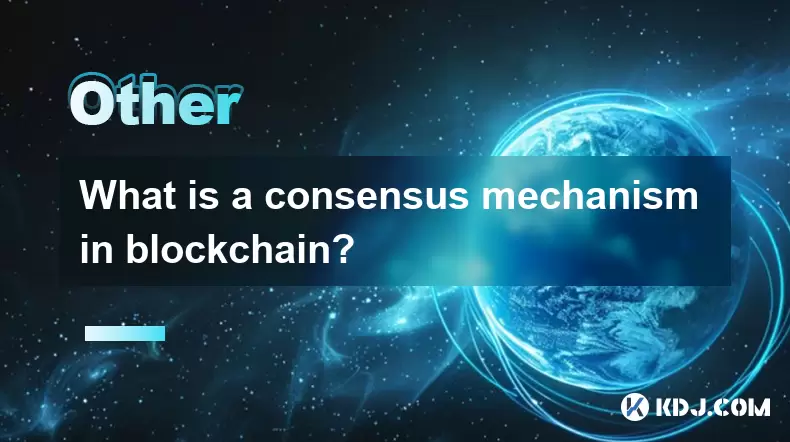
What is a consensus mechanism in blockchain?
Jul 21,2025 at 03:01am
Understanding the Basics of Consensus MechanismsA consensus mechanism is a critical component of any blockchain network. It refers to the process by w...
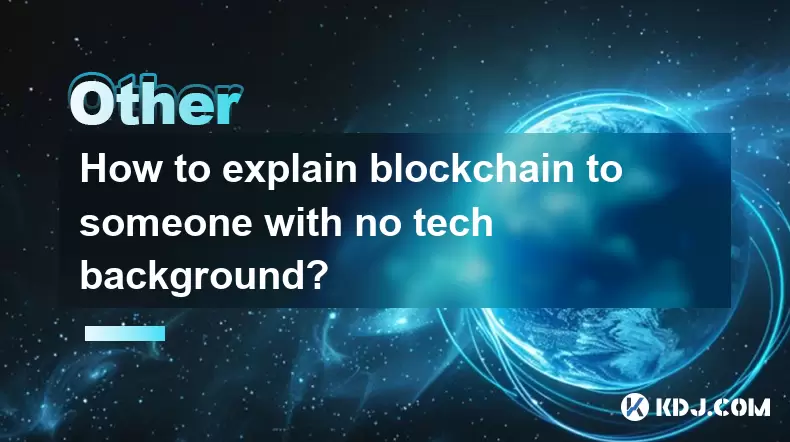
How to explain blockchain to someone with no tech background?
Jul 18,2025 at 11:08pm
Understanding the Basics of BlockchainTo explain blockchain to someone with no tech background, it's essential to start with simple analogies and avoi...
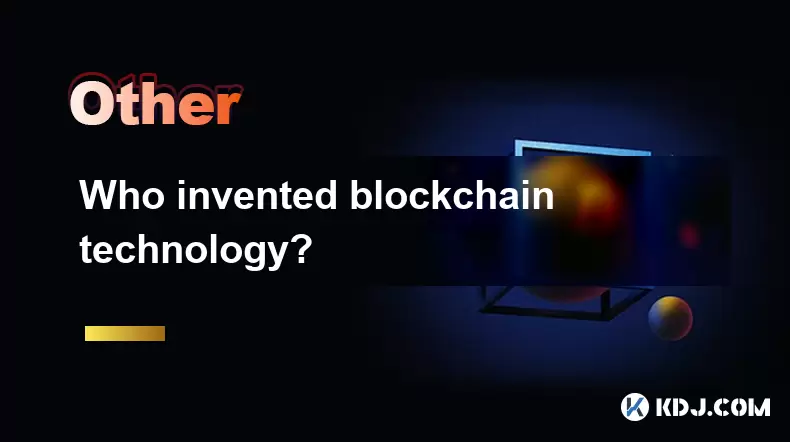
Who invented blockchain technology?
Jul 23,2025 at 01:28am
Origins of Blockchain TechnologyBlockchain technology did not emerge from a single inventor or institution. Instead, it evolved through a series of ac...

How to start a business using blockchain?
Jul 28,2025 at 12:36am
Understanding the Basics of Blockchain TechnologyBefore diving into the process of starting a business using blockchain, it's crucial to understand wh...

What is a token on the blockchain?
Jul 21,2025 at 07:00am
Understanding the Concept of a TokenIn the realm of blockchain technology, a token is a digital representation of an asset or utility that exists on a...

Can blockchain be used for identity verification?
Jul 18,2025 at 02:14pm
Understanding Identity Verification in the Digital AgeIn the modern digital landscape, identity verification has become a critical component for ensur...

What is a consensus mechanism in blockchain?
Jul 21,2025 at 03:01am
Understanding the Basics of Consensus MechanismsA consensus mechanism is a critical component of any blockchain network. It refers to the process by w...

How to explain blockchain to someone with no tech background?
Jul 18,2025 at 11:08pm
Understanding the Basics of BlockchainTo explain blockchain to someone with no tech background, it's essential to start with simple analogies and avoi...

Who invented blockchain technology?
Jul 23,2025 at 01:28am
Origins of Blockchain TechnologyBlockchain technology did not emerge from a single inventor or institution. Instead, it evolved through a series of ac...
See all articles




















